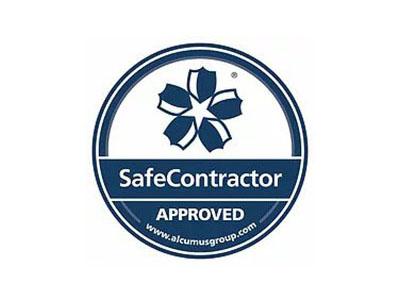How often should a pitched steel roof be inspected?
A pitched steel roof will need to be inspected for various reasons, but due to its shape and depending on access, this might not always be a simple matter. Pitched roofs can be problematic, as water can pool and build up at the roof edge, placing extra pressure on sheet ends, fixings and gutters. We look at some important areas to check when inspecting a pitched roof, along with the recommended frequency of inspections.
Regular maintenance checks for a pitched steel roof
Ideally, pitched steel roof inspections should be carried out twice a year to prepare for changing weather conditions. An autumn inspection will enable measures to be put in place for the winter. Likewise, an inspection in early spring enables any winter damage to be repaired and provides an opportunity to protect the roof from the effects of summer heat.
A proactive and regular approach to pitched steel roof inspections will ensure you can deal with any damage or repair work before small problems become big issues. As climate change is increasingly causing adverse weather conditions, it’s advisable to inspect industrial roofs after a severe storm or prolonged heatwave to check and repair damage.
The following seven areas need to be checked when inspecting a pitched steel roof:
- Visual inspection – Start by walking around the building to understand its construction and use. Review any maintenance records, the repair history and any previous surveys, so you have a benchmark to carry out the roof inspection.
- Internal inspection – Walk around inside the building to look for ceiling cracks, holes or any signs of water penetration. Ceilings that are stained or have a deformed finish are a strong indicator of a possible leaking roof.
- General weakness and deterioration – Once up on the roof, check the condition of the pitched steel sheets. Also, check that the roof is performing in the way it has been designed. Look for any debris, damage or hazards.
- Water pooling – If rainwater is pooling in certain areas of the roof that have not been designed to withstand excess water, this could lead to corrosion. Check where and when the water is pooling, so you can identify the areas that need to be repaired.
- Sheet ends, side and end lap seals – Cut edges are more subject to corrosion, especially if the sheet end is exposed or immersed in pooling water. Catching and treating cut edge corrosion early will save a lot of issues and cost later down the line.
- Skylights – a pitched roof inspection is a good opportunity to check, clean or replace any damaged or worn skylights. Look for gaps between the metal roof sheets and flashings. As above, damaged areas could expose cut edges, leading to corrosion.
- Roof vents and gutters – Theses areas can easily become blocked, so check for cracks. Water should be flowing freely and through downpipes. Look out for any areas of corrosion; if this becomes excessive it could cause major issues.
Guidance for pitched steel roof inspections
Inspecting a pitched steel roof can be very dangerous due to its sloping sides. If an inspection is likely to only last a short time, such as a few minutes, properly secured ladders or purpose-designed roof ladders may be used with caution.
The HSE (Health and Safety Executive) recommends the use of scaffolding for sloping roof inspections, due to the risk of people or materials falling over the edge. Ideally, edge protection should be fitted to the eaves of any sloping roof and terraced buildings to the rear and front.
Repairing a pitched steel roof
Choosing the right product to repair a pitched steel roof is important, especially as this may not be an easily accessible area. If you discover corrosion at the cut edges of any metal sheets, use Giromax® Edgecoat. This cut edge corrosion treatment uses laminar flake technology that seals and bonds with the corrosion and comes with a 15-year guarantee.
If flaking paint is identified, or surface areas appear to be micro checking, the existing coating may be breaking down and close to failing. It’s important to catch and treat failing coatings as early as possible to prevent peeling coatings causing problems elsewhere, for example, blocking gutters.
Use Giromax® Roofcoat to treat damaged or weathered profiled metal roof sheets. This coating system forms a tough elastic coating to repair and protect the metal roof and can be applied in damp and wet conditions. Our market-leading, moisture-tolerant roof coating is unmatched and comes with a 25-year guarantee.
If you need advice on repairing a pitched steel roof, or application guidance for any of our products, please speak to the Giromax team or call 01455 558969 today.
Get updates from us
Sign up to our newsletter to receive all the latest news and insights from Giromax Technology.
Subscribe to NewsletterRelated articles
5 Reasons why Dilapidation Surveys are Important
Dilapidation surveys protecting your roof investment, ensuring compliance and safety standards, and accurate repair and maintenance planning.
5 Common Cladding Issues and How to Fix Them
Common cladding issues include cracking and structural damage, water ingress and moisture-related problems. We explore ways to fix cladding.
5 Commercial Roofing Industry Trends & Innovations in 2025
The latest commercial roofing industry trends include smart roofing technology, IoT, sustainable roofing solutions and advanced roof coatings…









